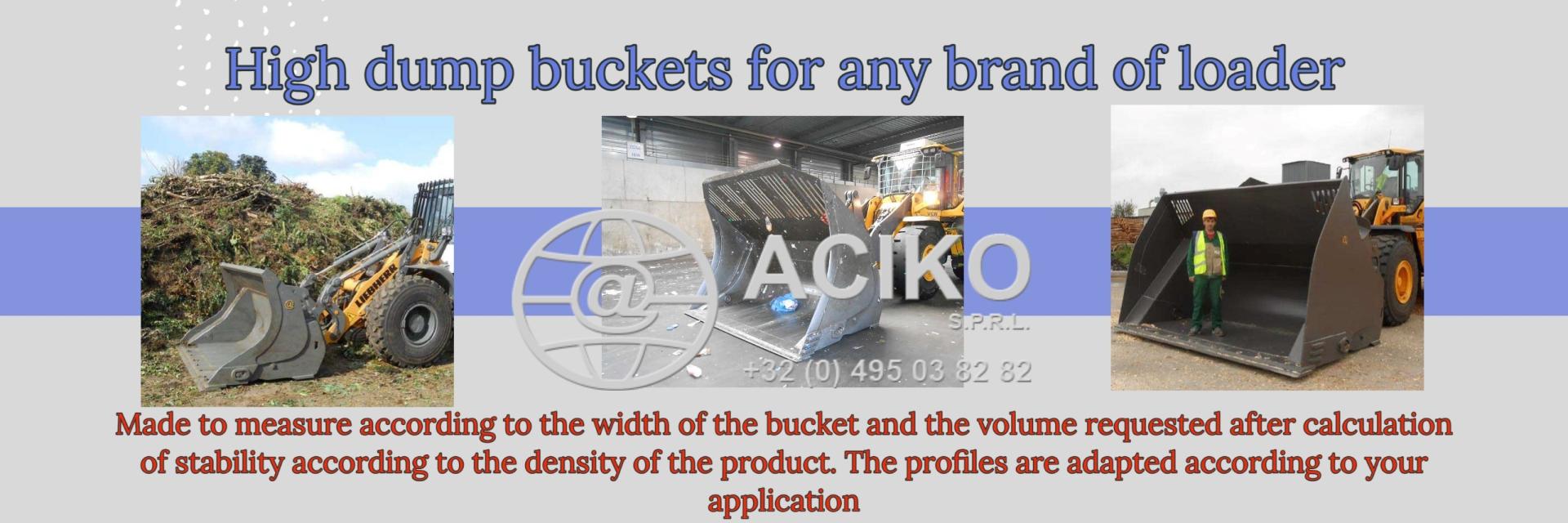Reimagining the Ancient Design of Concrete for the 21st Century
 13/04/23-FR-English-NL-footer
13/04/23-FR-English-NL-footer
Réinventer la conception ancienne du béton pour le 21e siècle
 Concept artwork depicting a new metamaterial concrete in use on a highway. Credit: Amir Alavi via Midjourney
Concept artwork depicting a new metamaterial concrete in use on a highway. Credit: Amir Alavi via Midjourney
Le béton est le matériau le plus utilisé dans l'industrie de la construction et remonte à l'Empire romain. Les ingénieurs de l'Université de Pittsburgh réinventent maintenant sa conception pour le 21e siècle.
De nouvelles recherches introduisent le béton métamatériel pour le développement de systèmes d'infrastructure civile intelligents. L'article, "Systèmes de béton métamatériaux intégrés à un nanogénérateur multifonctionnel pour une infrastructure civile intelligente", présente un nouveau concept de systèmes de béton légers et réglables mécaniquement qui ont intégré des fonctionnalités de récupération et de détection d'énergie.
"La société moderne utilise le béton dans la construction depuis des centaines d'années, après sa création originale par les anciens Romains", a déclaré Amir Alavi, professeur adjoint de génie civil et environnemental à Pitt, qui est l'auteur correspondant de l'étude. « L'utilisation massive du béton dans nos projets d'infrastructures implique la nécessité de développer une nouvelle génération de matériaux en béton plus économiques et respectueux de l'environnement, tout en offrant des fonctionnalités avancées. Nous croyons que nous pouvons atteindre tous ces objectifs en introduisant un paradigme métamatériel dans le développement des matériaux de construction.
Alavi et son équipe ont déjà développé des métamatériaux auto-conscients et exploré leur utilisation dans des applications telles que les implants intelligents. Cette étude introduit l'utilisation de métamatériaux dans la création de béton, permettant au matériau d'être spécifiquement conçu pour son usage. Des attributs tels que la fragilité, la flexibilité et la capacité de mise en forme peuvent être affinés lors de la création du matériau, permettant aux constructeurs d'utiliser moins de matériau sans sacrifier la résistance ou la longévité.
"Ce projet présente le premier béton métamatériau composite avec une super compressibilité et une capacité de récupération d'énergie", a déclaré Alavi. "De tels systèmes de béton légers et mécaniquement réglables peuvent ouvrir la porte à l'utilisation du béton dans diverses applications telles que les matériaux d'ingénierie absorbant les chocs dans les aéroports pour aider à ralentir les avions en fuite ou les systèmes d'isolation de base sismique."
Non seulement cela, mais le matériau est capable de générer de l'électricité. Bien qu'il ne puisse pas produire suffisamment d'électricité pour alimenter le réseau électrique, le signal généré sera plus que suffisant pour alimenter les capteurs en bordure de route. Les signaux électriques auto-générés par le béton métamatériau sous excitations mécaniques peuvent également être utilisés pour surveiller les dommages à l'intérieur de la structure en béton ou pour surveiller les tremblements de terre tout en réduisant leur impact sur les bâtiments.
À terme, ces structures intelligentes pourraient même alimenter des puces intégrées à l'intérieur des routes pour aider les voitures autonomes à naviguer sur les autoroutes lorsque les signaux GPS sont trop faibles ou que le LIDAR ne fonctionne pas.
Le matériau est composé de réseaux de polymères auxétiques renforcés intégrés dans une matrice de ciment conducteur. La structure composite induit une électrification de contact entre les couches lorsqu'elle est déclenchée mécaniquement. Le ciment conducteur, qui est renforcé avec de la poudre de graphite, sert d'électrode dans le système. Des études expérimentales montrent que le matériau peut se comprimer jusqu'à 15 % sous une charge cyclique et produire 330 μW de puissance.
L'équipe de recherche s'associe au ministère des Transports de Pennsylvanie (PennDOT) par l'intermédiaire du consortium IRISE à Pitt pour développer ce béton métamatériel à utiliser sur les routes de Pennsylvanie.
NJC.© Info University of Pittsburgh
-------------------------------------------------------------------------------------------------------------------
 13/04/23-English
13/04/23-English
Reimagining the Ancient Design of Concrete for the 21st Century
 Concept artwork depicting a new metamaterial concrete in use on a highway. Credit: Amir Alavi via Midjourney
Concept artwork depicting a new metamaterial concrete in use on a highway. Credit: Amir Alavi via Midjourney
Concrete is the most used material in the construction industry and dates to the Roman Empire. Engineers at the University of Pittsburgh are now reimagining its design for the 21st century.
New research introduces metamaterial concrete for the development of smart civil infrastructure systems. The paper, “Multifunctional Nanogenerator-Integrated Metamaterial Concrete Systems for Smart Civil Infrastructure,” presents a new concept for lightweight and mechanically-tuneable concrete systems that have integrated energy harvesting and sensing functionality.
“Modern society has been using concrete in construction for hundreds of years, following its original creation by the ancient Romans,” said Amir Alavi, assistant professor of civil and environmental engineering at Pitt, who is the corresponding author on the study. “Massive use of concrete in our infrastructure projects implies the need for developing a new generation of concrete materials that are more economical and environmentally sustainable, yet offer advanced functionalities. We believe that we can achieve all of these goals by introducing a metamaterial paradigm into the development of construction materials.”
Alavi and his team have previously developed self-aware metamaterials and explored their use in applications like smart implants. This study introduces the use of metamaterials in the creation of concrete, making it possible for the material to be specifically designed for its purpose. Attributes like brittleness, flexibility and shapeability can be fine-tuned in the creation of the material, enabling builders to use less of the material without sacrificing strength or longevity.
“This project presents the first composite metamaterial concrete with super compressibility and energy harvesting capability,” said Alavi. “Such lightweight and mechanically tunable concrete systems can open a door to the use of concrete in various applications such as shock absorbing engineered materials at airports to help slow runaway planes or seismic base isolation systems.”
Not only that, but the material is capable of generating electricity. While it cannot produce enough electricity to send power to the electrical grid, the generated signal will be more than enough to power the roadside sensors. The electrical signals self-generated by the metamaterial concrete under mechanical excitations can also be used to monitor damage inside the concrete structure or to monitor earthquakes while reducing their impact on buildings.
Eventually, these smart structures may even power chips embedded inside roads to help self-driving cars navigate on highways when GPS signals are too weak or LIDAR is not working.
The material is composed of reinforced auxetic polymer lattices embedded in a conductive cement matrix. The composite structure induces contact-electrification between the layers when triggered mechanically. The conductive cement, which is enhanced with graphite powder, serves as the electrode in the system. Experimental studies show that the material can compress up to 15% under cyclic loading and produce 330 μW of power.
The research team is partnering with the Pennsylvania Department of Transportation (PennDOT) through the IRISE Consortium at Pitt to develop this metamaterial concrete for use on Pennsylvania roads.
NJC.© Info University of Pittsburgh
-----------------------------------------------------------------------------------------------------------------
 13/04/23-NL
13/04/23-NL
Een nieuwe kijk op het eeuwenoude ontwerp van beton voor de 21e eeuw
 Concept artwork depicting a new metamaterial concrete in use on a highway. Credit: Amir Alavi via Midjourney
Concept artwork depicting a new metamaterial concrete in use on a highway. Credit: Amir Alavi via Midjourney
Beton is het meest gebruikte materiaal in de bouwsector en dateert uit het Romeinse Rijk. Ingenieurs van de Universiteit van Pittsburgh herdenken nu het ontwerp voor de 21e eeuw.
Nieuw onderzoek introduceert metamateriaalbeton voor de ontwikkeling van slimme civiele infrastructuursystemen. De paper, "Multifunctional Nanogenerator-Integrated Metamaterial Concrete Systems for Smart Civil Infrastructure", presenteert een nieuw concept voor lichtgewicht en mechanisch afstembare betonsystemen met geïntegreerde functionaliteit voor het oogsten en detecteren van energie.
"De moderne samenleving gebruikt al honderden jaren beton in de bouw, na de oorspronkelijke creatie ervan door de oude Romeinen", zegt Amir Alavi, assistent-professor civiele techniek en milieutechniek bij Pitt, die de corresponderende auteur van het onderzoek is. “Het massaal gebruik van beton in onze infrastructuurprojecten impliceert de noodzaak om een nieuwe generatie betonmaterialen te ontwikkelen die zuiniger en milieuvriendelijker zijn, maar toch geavanceerde functionaliteiten bieden. Wij geloven dat we al deze doelen kunnen bereiken door een metamateriaalparadigma te introduceren in de ontwikkeling van bouwmaterialen.”
Alavi en zijn team hebben eerder zelfbewuste metamaterialen ontwikkeld en het gebruik ervan in toepassingen zoals slimme implantaten onderzocht. Deze studie introduceert het gebruik van metamaterialen bij het maken van beton, waardoor het materiaal specifiek voor zijn doel kan worden ontworpen. Eigenschappen zoals broosheid, flexibiliteit en vormbaarheid kunnen worden verfijnd bij het maken van het materiaal, waardoor bouwers minder van het materiaal kunnen gebruiken zonder in te boeten aan sterkte of levensduur.
"Dit project presenteert het eerste composiet metamateriaalbeton met supersamendrukbaarheid en energieoogstcapaciteit", zei Alavi. "Zulke lichtgewicht en mechanisch afstembare betonsystemen kunnen de deur openen naar het gebruik van beton in verschillende toepassingen, zoals schokabsorberende technische materialen op luchthavens om op hol geslagen vliegtuigen of seismische basisisolatiesystemen te helpen vertragen."
Niet alleen dat, maar het materiaal is ook in staat om elektriciteit op te wekken. Hoewel het niet genoeg elektriciteit kan produceren om stroom naar het elektriciteitsnet te sturen, zal het gegenereerde signaal meer dan genoeg zijn om de sensoren langs de weg van stroom te voorzien. De elektrische signalen die door het metamateriaal beton zelf worden gegenereerd onder mechanische excitaties, kunnen ook worden gebruikt om schade in de betonconstructie te bewaken of om aardbevingen te monitoren en tegelijkertijd hun impact op gebouwen te verminderen.
Uiteindelijk kunnen deze slimme structuren zelfs chips aandrijven die in wegen zijn ingebed om zelfrijdende auto's te helpen navigeren op snelwegen wanneer de GPS-signalen te zwak zijn of LIDAR niet werkt.
Het materiaal is samengesteld uit versterkte auxetische polymeerroosters ingebed in een geleidende cementmatrix. De composietstructuur induceert contactelektrificatie tussen de lagen wanneer deze mechanisch wordt geactiveerd. Het geleidende cement, dat is verrijkt met grafietpoeder, dient als elektrode in het systeem. Experimentele studies tonen aan dat het materiaal onder cyclische belasting tot 15% kan comprimeren en 330 μW aan vermogen kan produceren.
Het onderzoeksteam werkt samen met het Pennsylvania Department of Transportation (PennDOT) via het IRISE Consortium in Pitt om dit metamateriaalbeton te ontwikkelen voor gebruik op wegen in Pennsylvania.
NJC.© Info University of Pittsburgh
-----------------------------------------------------------------------------------------------------------------

















